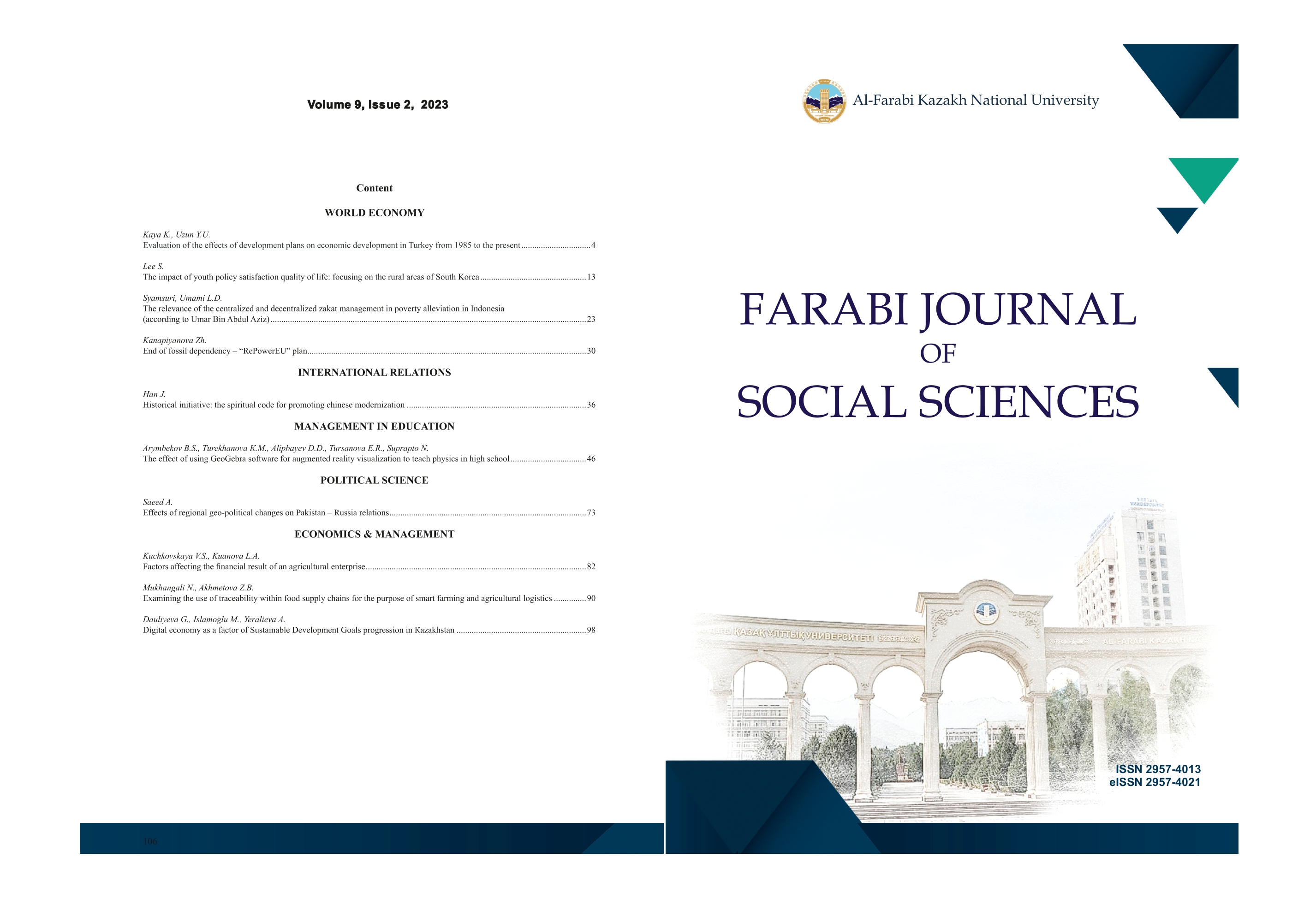THE EFFECT OF USING GEOGEBRA SOFTWARE FOR AUGMENTED REALITY VISUALIZATION TO TEACH PHYSICS IN HIGH SCHOOL
DOI:
https://doi.org/10.26577/FJSS.2023.v9.i2.06Abstract
The primary objective of this research is to assess the impact of GeoGebra software, an instructional tool incorporating augmented reality and sensing technology, on both the academic achievement and the learning experience of pupils in the context of teaching physics. The study aims to gather insights from pupils regarding their perspectives on augmented reality. To achieve these goals, a mixed-method approach was utilized. The findings of this study suggest that learning environments incorporating augmented reality can be effective tools for teaching physics. Augmented reality provides a unique way to enhance the learning process by introducing visual and textual elements that can make abstract concepts more tangible and engaging for pupils. This technology can help pupils overcome their fear of physics, stimulate their curiosity, and make the subject matter more appealing. Additionally, the study highlights the potential of augmented reality to improve academic achievement, especially in areas where pupils struggle to grasp complex concepts. It can offer a more realistic and interactive learning experience compared to traditional classroom settings, which can lead to better comprehension and retention of physics principles. The use of augmented reality in physics education appears promising, and further research in this area could provide valuable insights into how to leverage technology to enhance the learning experience for pupils in various subjects. Pupils engaged in activities integrated with augmented reality displayed increased participation, greater comfort, and improved ability to address subject-related questions, heightened self-confidence, and achieved higher academic success in physics. Augmented reality should be viewed as a standalone learning environment for physics instruction and as a supplementary tool to enhance the traditional laboratory setting.
Keywords: teaching physics, teaching methodology, high education, augmented reality, applications for teaching physics.




